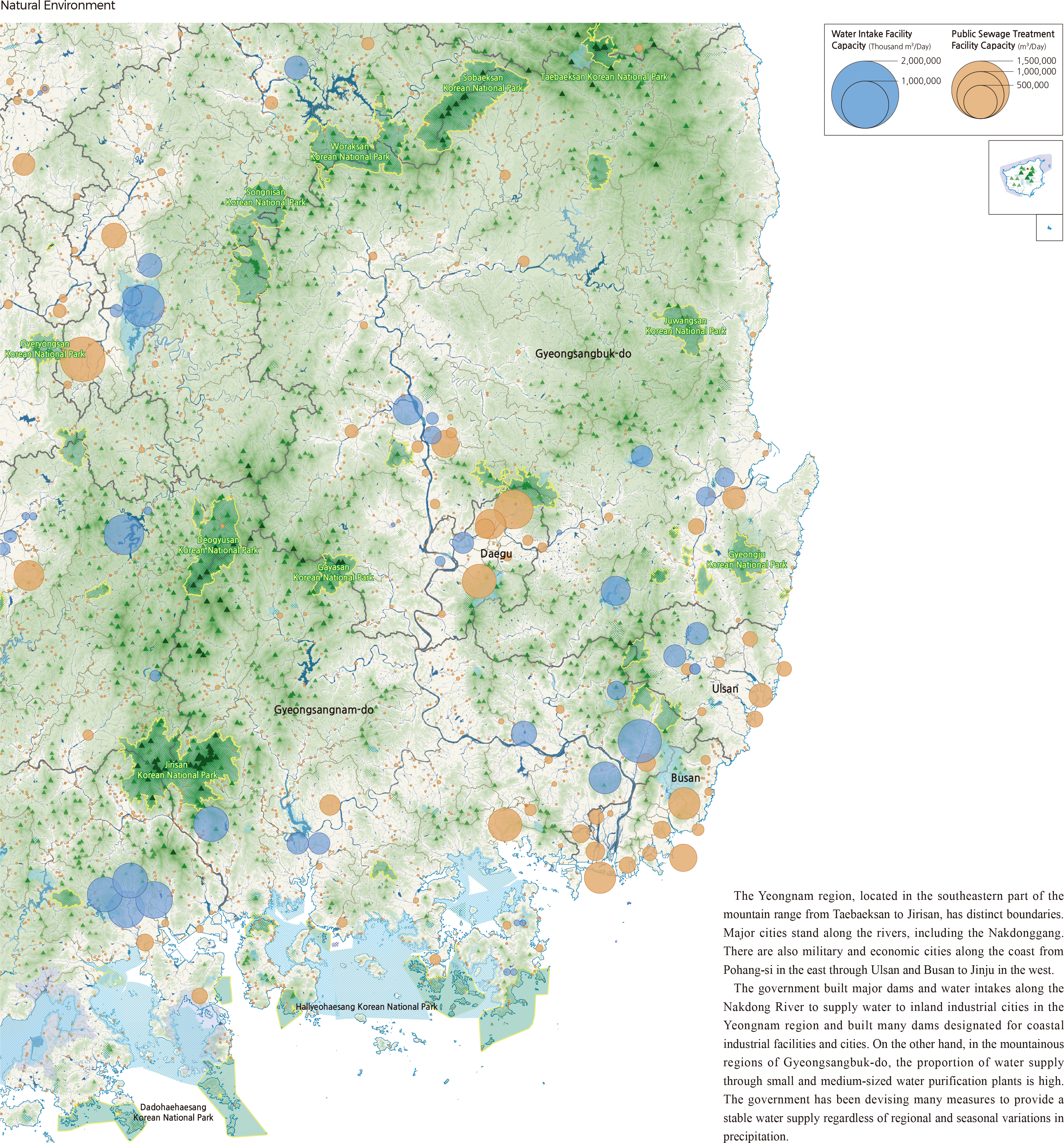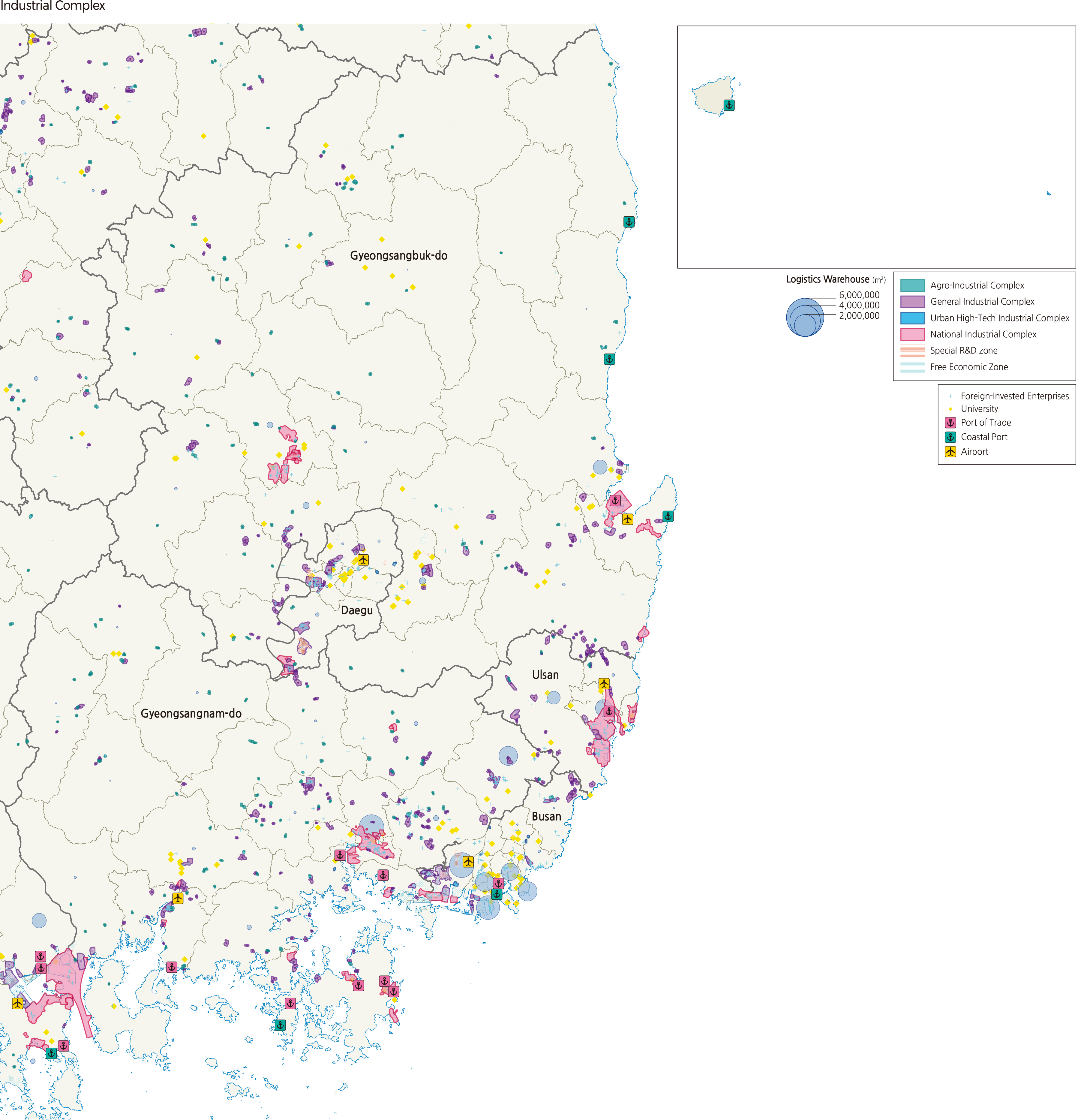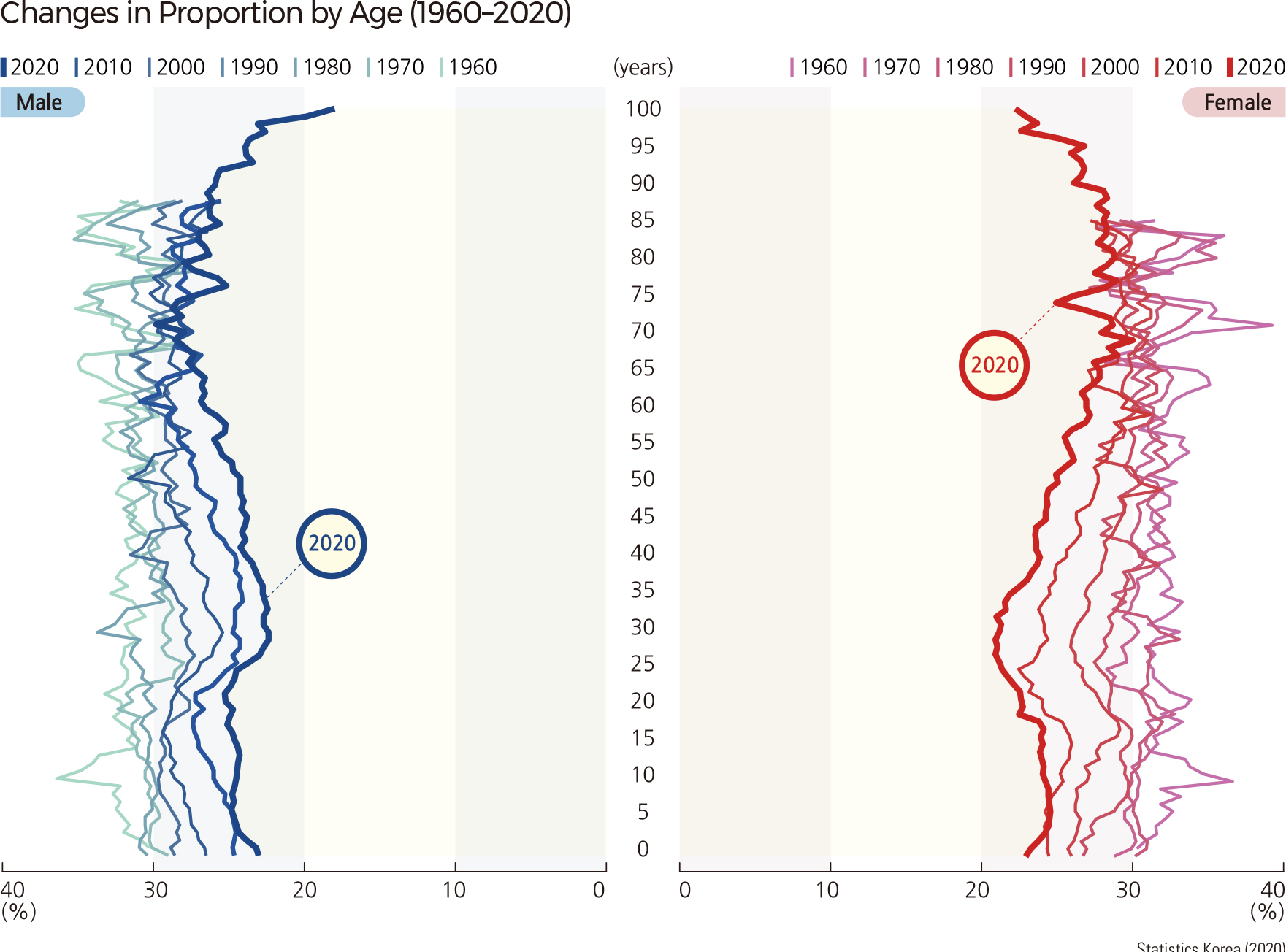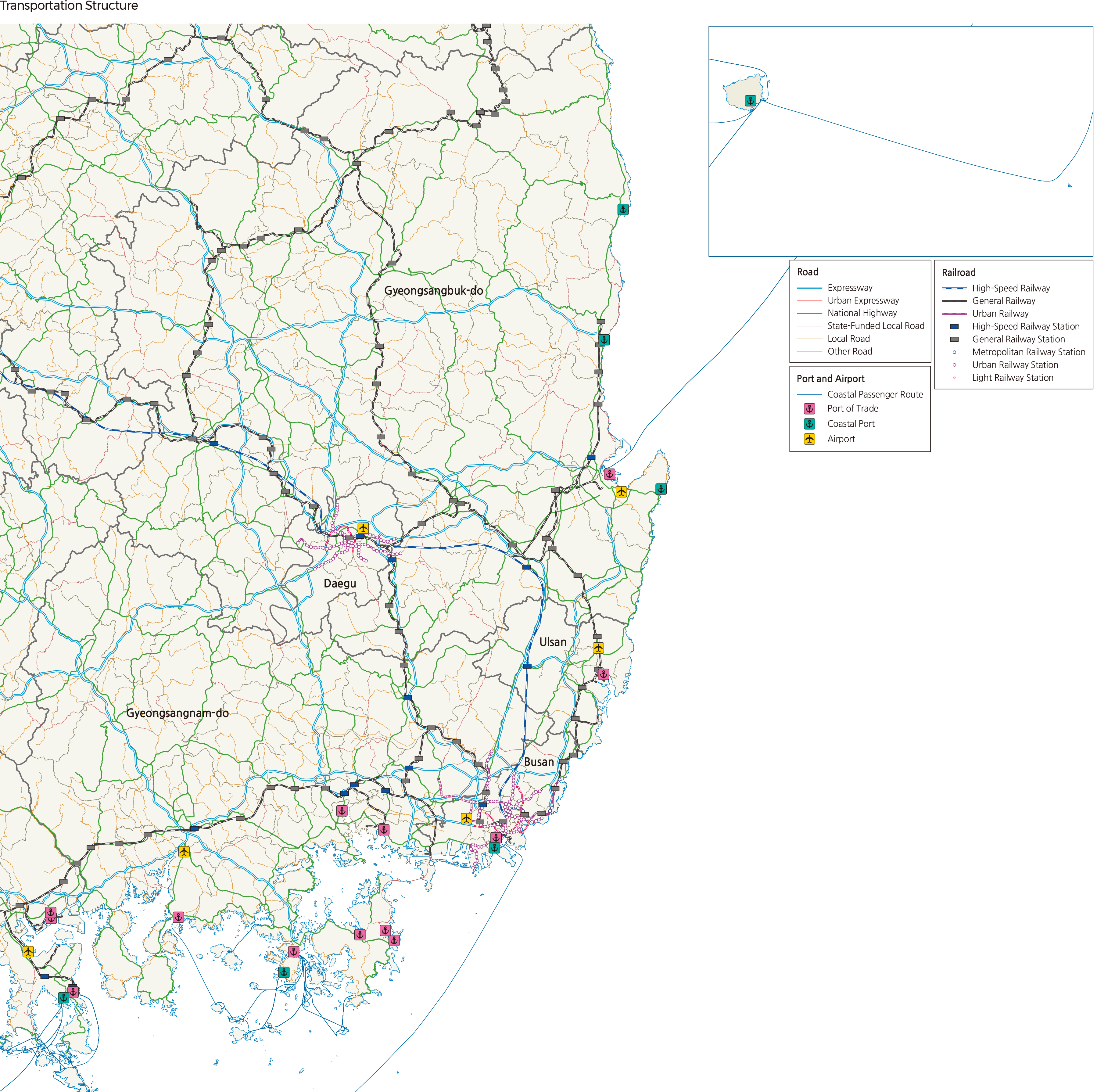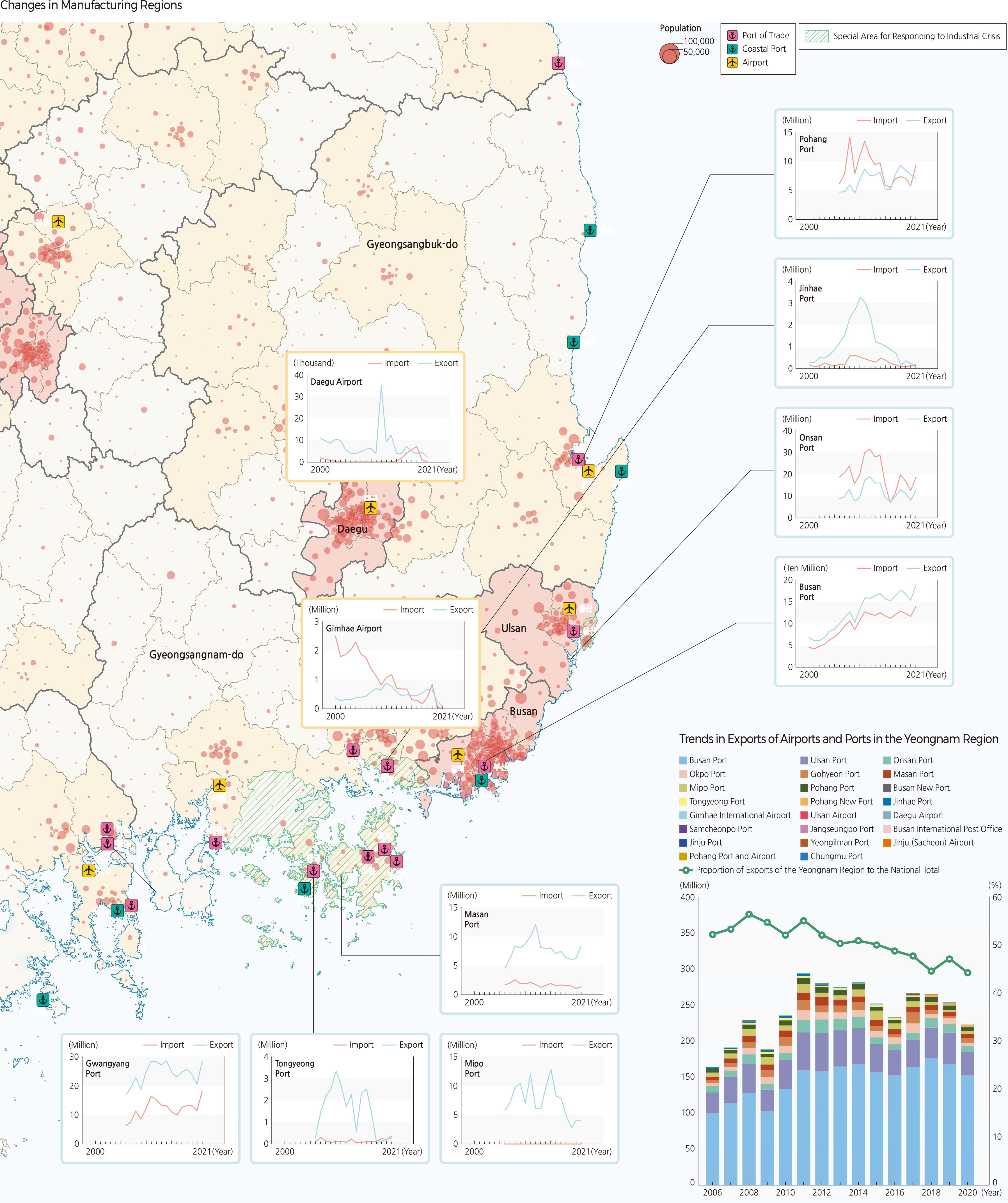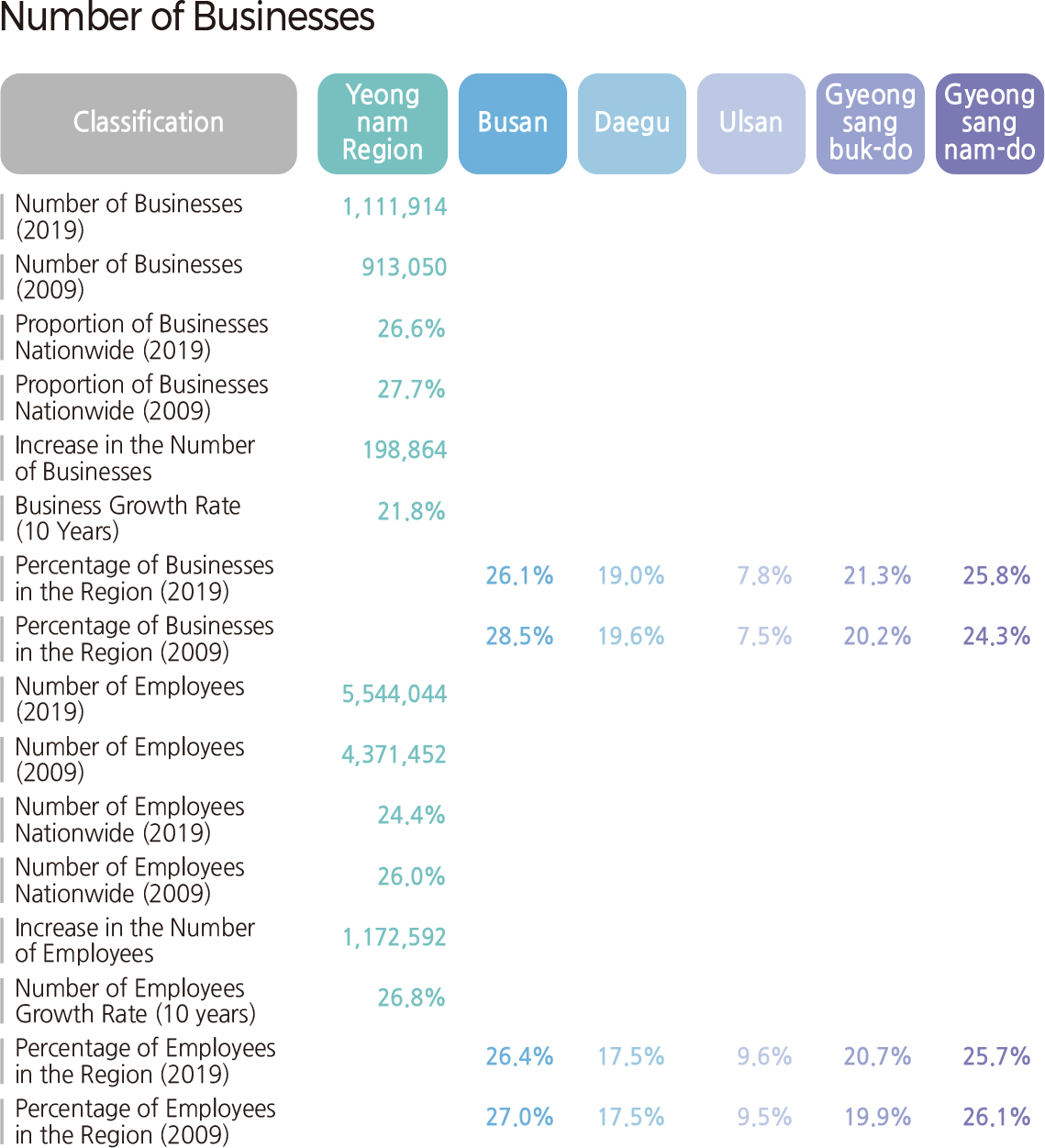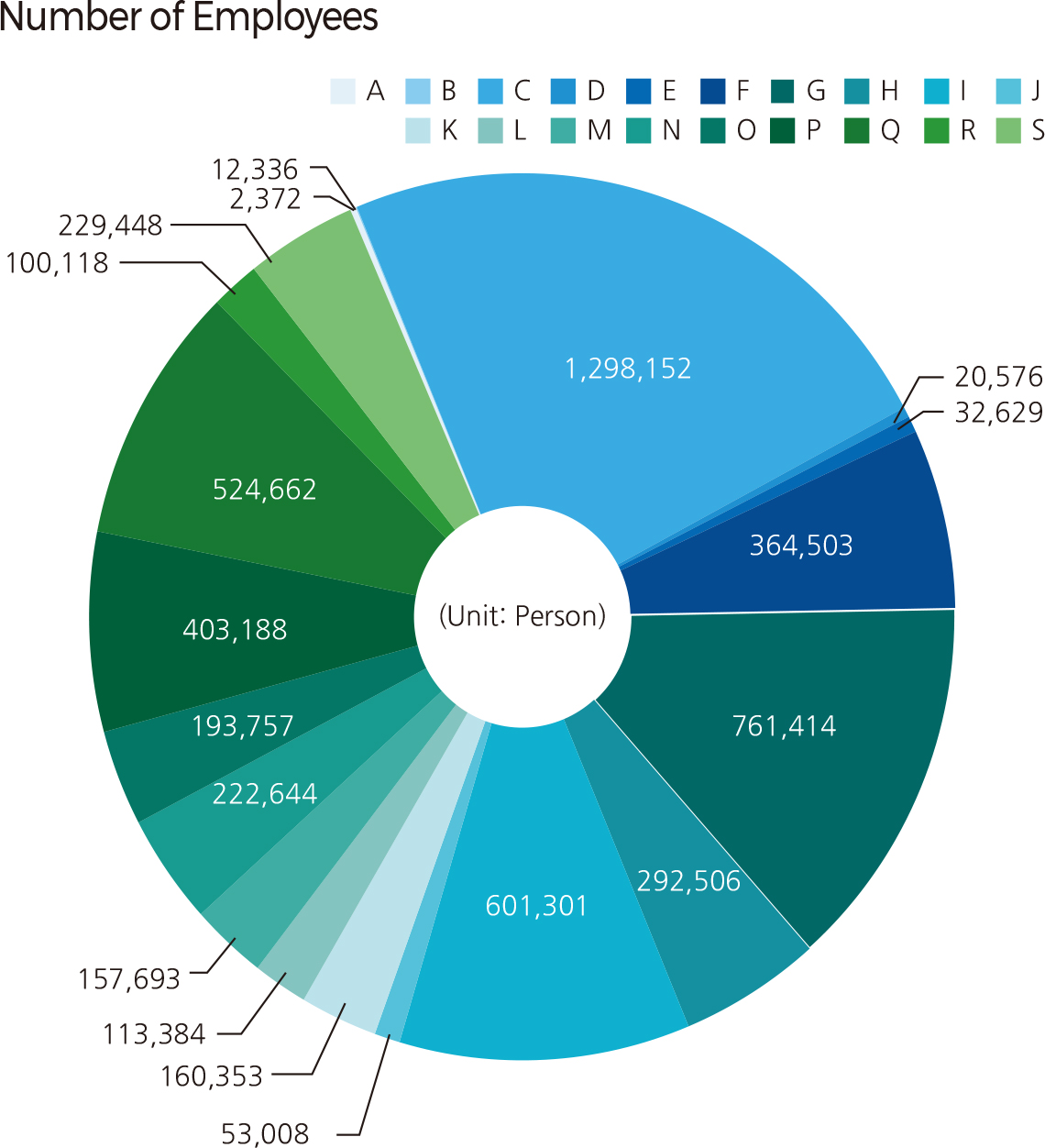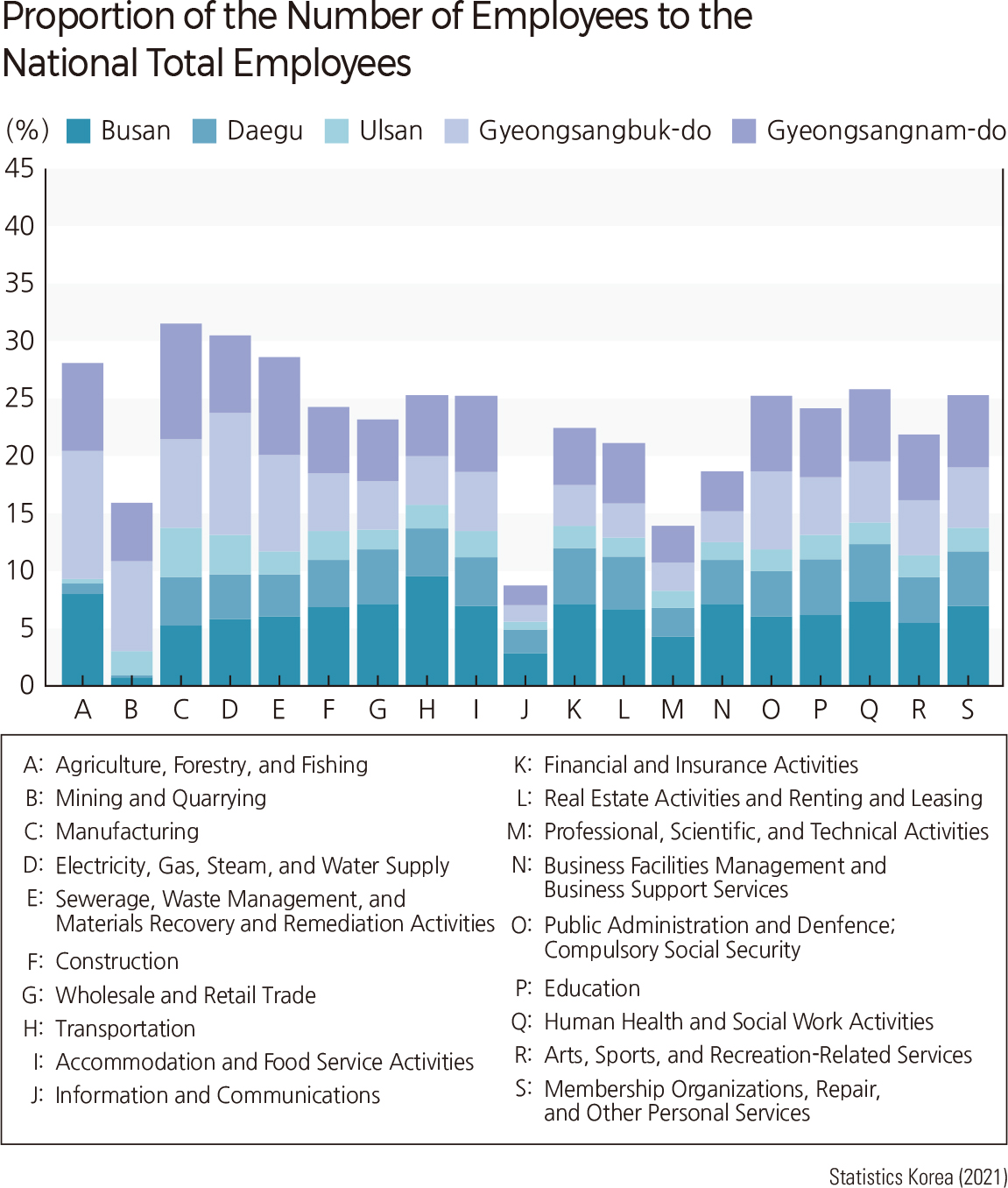English III 2021
The Yeongnam region, located in the southeastern part of the mountain range from Taebaeksan to Jirisan, has distinct boundaries. Major cities stand along the rivers, including the Nakdonggang. There are also military and economic cities along the coast from Pohang-si in the east through Ulsan and Busan to Jinju in the west. The government built major dams and water intakes along the Nakdong River to supply water to inland industrial cities in the Yeongnam region and built many dams designated for coastal industrial facilities and cities. On the other hand, in the mountainous regions of Gyeongsangbuk-do, the proportion of water supply through small and medium-sized water purification plants is high. The government has been devising many measures to provide a stable water supply regardless of regional and seasonal variations in precipitation.
The Gyeongbu Line Railway and Gyeongbu Expressway form a diagonal transportation axis running from northwest to southeast in the Yeongnam region. The Namhaean Expressway forms the coastal road axis at the southern end of the Yeongnam region. Since the 1990s, many highways have been built due to the development of the national highway network. The Jungang Expressway, which starts from Chuncheon-si, creates a north-south transportation network connecting the inland cities of Gyeongsangbuk-do, such as Yeongju-si, Andong-si, and Daegu. The Jungbu Naeryuk Expressway, which runs through Mungyeong-si, Sangju-si, Gumi-si, and Changwon-si, connects many agricultural and industrial cities inland. As for the east-west transportation axis, the Dangjin-Yeongdeok Expressway, which starts from Dangjin-si on the west coast, passes through Cheongju-si and Sangju-si to the east coast. The Gwangju-Daegu Expressway, which runs from Gwangju to Daegu through the Jirisan, is now connected to the Saemangeum-Pohang Expressway, forming an east-west axis network in the Yeongnam region. The city network consists of inland cities such as Daegu and Gimcheon-si and a series of coastal cities such as Pohang-si, Ulsan, Busan, Changwon-si, and Jinju-si. With the introduction of urban-rural complex cities integrating -si districts and neighboring -gun districts in the 1990s, all ten -si districts in Gyeongsangbuk-do became urban-rural complex cities, and so did 9 out of 10 -si districts in Gyeongsangnam-do. As a result, the Yeongnam region consists of the urban axis connecting Pohang-si, Ulsan, Busan, and Changwon-si, which started as an industrial city and grew into a metropolitan city, and the urban-rural complex cities such as Mungyeong-si, Sangju-si, and Andong-si, which gradually expanded from agricultural-based inland cities. |
